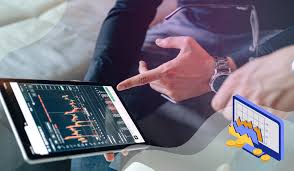Contracts for Difference (CFDs) have become an increasingly popular financial instrument for traders looking to speculate on the price movements of assets without owning the assets themselves. But what exactly is cfd trading, and how does one effectively trade Contracts for Difference? This article breaks down the essentials.
What is CFD Trading ?
CFDs are financial derivative instruments that allow traders to speculate on price movements in different markets like stocks, commodities, forex, indices, and more. Here’s how they work:
When you trade a CFD, you’re entering into an agreement with a broker to exchange the difference in the price of an asset from the time the contract is opened to its closure. This means you can profit (or incur losses) from price movements, regardless of whether the market is rising or falling.
Importantly, with CFDs, you never own the underlying asset. This provides significant flexibility as it allows traders to take advantage of both upward (long positions) and downward (short positions) market trends.
Key Features of CFD Trading
Understanding the nature of CFD Trading begins with its key characteristics, which include:
•Leverage: CFDs are traded on margin, meaning you can control larger positions with a relatively small deposit. For example, with 10x leverage, a $100 investment allows you to control $1,000 worth of assets. While leverage magnifies potential profits, it can also amplify losses.
•Access to Global Markets: Trading CFDs provides exposure to a variety of assets from global markets, all from a single platform.
•Flexibility to Trade Both Directions: Unlike traditional buying strategies where profit is possible only if an asset’s price rises, CFDs allow traders to speculate on falling prices by shorting an asset.
How to Trade CFDs
Getting started with CFD Trading requires a combination of preparation, strategy, and risk management. Below are the steps:
Step 1: Choose a Reliable CFD Broker
Selecting the right broker is critical. Look for a platform that offers competitive spreads, user-friendly technology, and access to a wide range of markets. Check for regulatory oversight to ensure security.
Step 2: Understand Your Market
Before Trading a CFD, research the market thoroughly. Study price trends, market conditions, and any economic or global events that may impact asset prices.
Step 3: Build a Trading Strategy
Effective Trading requires a clear approach. Decide whether to go long (buy) or short (sell) based on your analysis and set clear entry and exit points.
Step 4: Manage Risk
Leverage and volatile markets can result in significant losses. Use tools like stop-loss orders to cap potential losses and avoid over-leveraging your account.
Step 5: Monitor Your Trades
CFDs are fast-moving instruments. Stay up-to-date with market developments and adjust your strategy as needed.
A Final Word on CFD Trading
CFD Trading offers diverse opportunities for both new and experienced traders. However, its leveraged nature means it demands strong risk management and a disciplined approach. By understanding the mechanics of Contracts for Difference and developing informed strategies, traders can effectively participate in this dynamic and potentially rewarding market.
